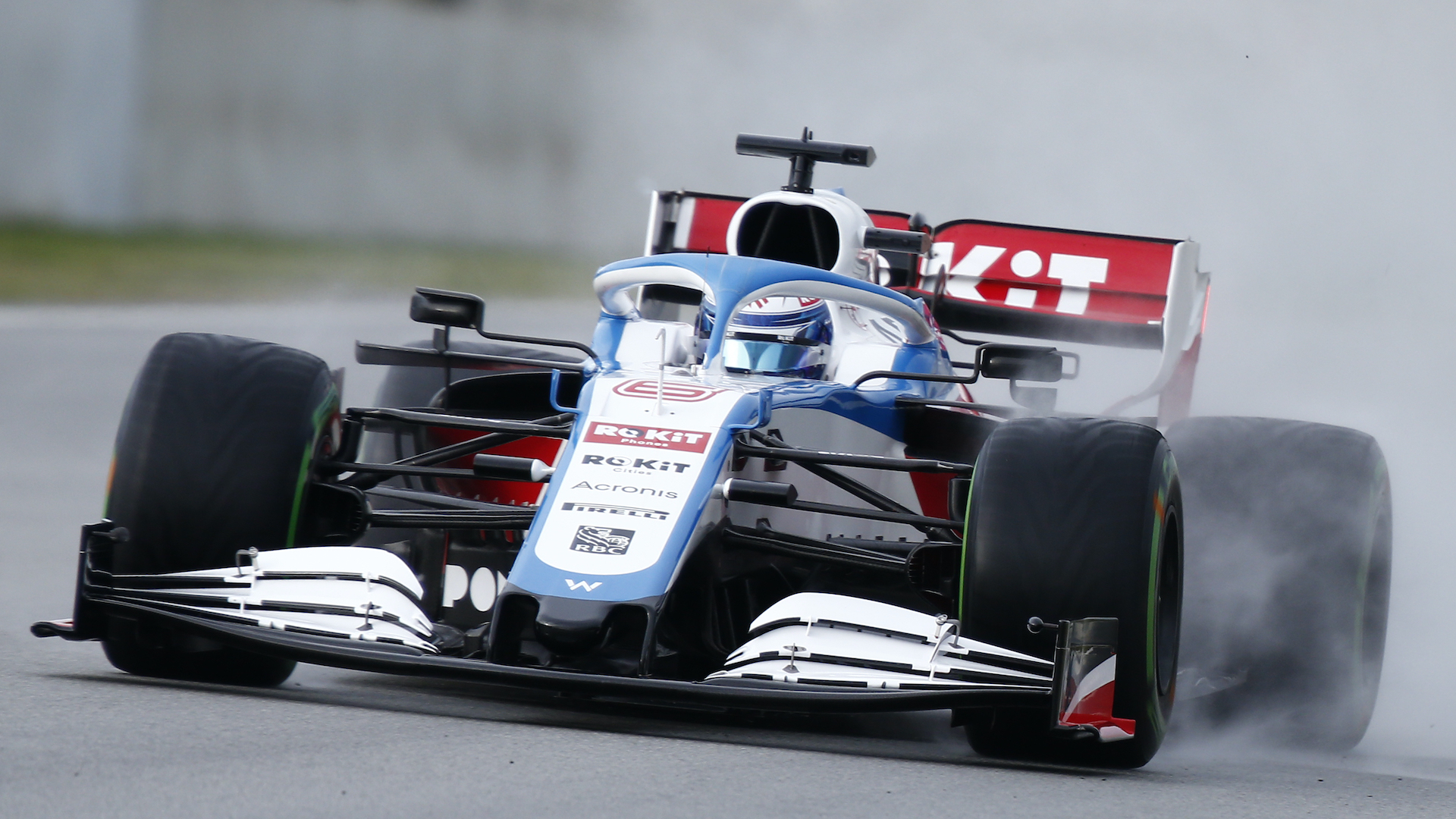

We may earn revenue from the products available on this page and participate in affiliate programs. Learn more ›
Racers will know the feeling of powering down a back straight, getting settled for a turn, initiating the turn, and then…nothing. The car continues straight at the same hellish pace, and now you’re heading for the gravel trap. This is called understeer.
Understeer, however, isn’t just a racecar driver dynamic, as civilians also know this feeling whenever they take a corner a little too hot or they turn the wheel during a snowstorm or heavy rain and nothing happens. Understeer isn’t a hot topic, especially for driver’s education teachers who just want you in, out, and your money in their pockets.
But understanding this car dynamic will help you be a better driver and public road citizen. That’s why the editors at The Drive have put together this guide today, to help you be the best driver you can be. So let’s get talkin’ about understeer.

What Is Understeer?
Understeer is when you turn the steering wheel too sharply, and, due to conditions or too much speed, the car continues forward in a straight line. Essentially, understeer occurs when your car’s tires run out of traction during a turn and the car won’t turn.
Understeer is more common in front-wheel-drive vehicles, though it can occur in rear-wheel and all-wheel-drive vehicles, too.
What Is Oversteer?
Oversteer is when the momentum of a turning car breaks its back tires’ traction and is visibly seen when the rear of your car rotates toward the front of your car. The most illustrative example of this is drifting, which is when a driver initiates oversteer to drift/slide the car around the apex of a corner and continue moving forward.
Oversteer is more common in rear-wheel-drive vehicles, though it can occur and be initiated in front-wheel and all-wheel-drive vehicles as well. You can learn more about oversteer here.
What Can Cause Understeer?
Here are a few things that can cause understeer in your car.
Slick Conditions
Slick, slippery, icy, or even just slightly wet conditions can also induce understeer, especially in front-wheel-drive vehicles. Off-road surfaces can also produce the effect.
Too Much Speed
One of the chief inducers of understeer is heading into a turn/corner with too much speed. Your tires have very specific breaking points. This is due to a number of factors, including your car’s weight, it’s steering angle, camber, caster, toe, and adhesion. When you introduce more speed to the equation, that breaking point becomes highly necessary to know.If you enter a corner too hot, your tires won’t grip, and you’ll end up plowing straight when you turn the wheels.

How Do You Stop Understeer?
First off, don’t panic. If you’ve found yourself in an understeer situation it’s easy to panic, adjust your inputs too drastically, and find yourself in a ditch or in the back of a Prius. Here’s how to correct a slide.
- Lift off the brake and gas.
- Steer into the slide, keeping your front wheels faced in the direction of travel you wish to go.
- You can apply some brakes, but don’t do too much. Sharp inputs will only make the slide worse.
- Wait until you feel traction return and then proceed as normal and with caution.
- Breathe.
Why Is Understeer Not Rad at All?
Unlike oversteer, which we’ve determined to be quite rad, understeer isn’t rad because there’s really no fun to it. It also has the habit of breaking things on your car and knocking your ego down a few pegs as you plow through the corner and out over a very steep cliff.
Understeer Terms You Should Know
Get schooled!
Counter-Steering
This is steering into a slide, which helps correct the slide and gets you back driving forward.
Lunch-tray Drifting
Lunch-tray drifting is a sport that involves front-wheel-drive vehicles and lunch-trays strapped to their rear wheels with the parking brake on. The slippery lunch-trays provide enough slip for the cars to “drift.”
Front-Wheel Drive (FWD)
Front-wheel drive is a type of vehicle propulsion that only rotates the front wheels with the engine’s power.
Rear-Wheel Drive (RWD)
Rear-wheel drive is a type of vehicle propulsion that only rotates the rear wheels with the engine’s power.
All-Wheel Drive (AWD)
All-wheel drive is a type of vehicle propulsion that rotates all four wheels with the engine’s power.
FAQs About Understeer
You’ve got questions, The Drive has answers!
A: If you keep sliding forward and only stop thanks to a tree, yeah, it’s bad.
A: Uh, huh?
A: I mean, it isn’t safer. Personally, oversteer is the safer option given that you have more control of the car’s slide. And no, it’s not more fun.
A: Front-wheel-drive cars understeer more due to the front wheels not only providing propulsion, but also turning and braking. That multitasking generally means it’s overworked and can lead to understeer.
Video

Featured Products
Bridgestone Blizzak WS80 Winter/Snow Passenger Tire
Michelin X-Ice Xi3 Winter Radial Tire
MICHELIN Premier LTX All-Season Tire
Pirelli CintuRato P7 All-Season Radial Tire
Let’s Talk: Comment Below To Talk With The Guides & Gear Editors!
We’re here to be expert guides in everything How To related. Use us, compliment us, yell at us. Comment below, and let’s talk! You can also shout at us on Twitter or Instagram, here are our profiles. Got a question? Got a pro tip? Send us a note: guidesandgear@thedrive.com.